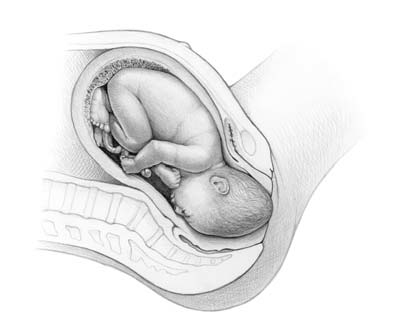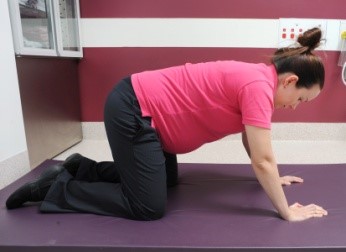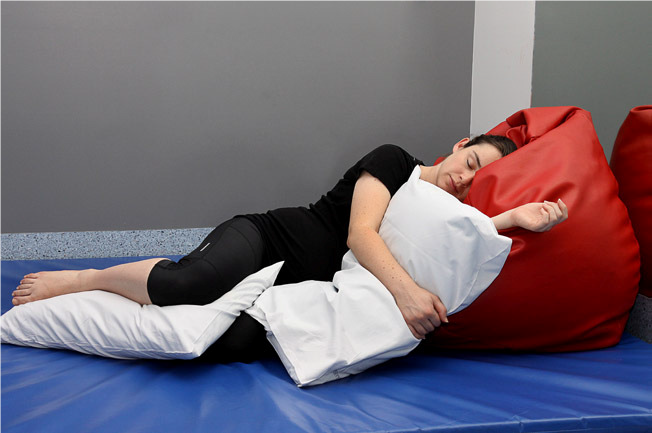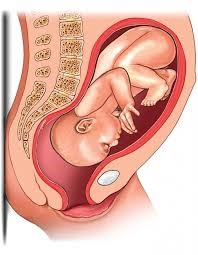Journey of labour
Getting baby in the right position for birth
There are things you can do during pregnancy to encourage baby into the best position for labour.
How you sit and use your body can affect the position of your baby in the uterus.
While this does not matter so much during early pregnancy, later on it can affect the position that the baby moves into (in the pelvis).
Presentation during labour refers to which part of the baby enters the birth canal first. Normally, the crown of the head will enter first, which is known as cephalic presentation. Other forms of presentation such as breech presentation may cause difficulties with birth.
Once the baby is head down, the best position for a labour is the anterior position.
Anterior position means the baby’s head enters the pelvis facing your back.
This is the ideal and most common position for birth (see image). When baby is in the anterior position, the smallest dimension of the baby’s head leads the way through the birth canal.

What can I do to get my baby in the best position?
You can use different positions during your pregnancy to give you the best chance of ‘optimally positioning your baby’ prior to labour.
Positions include:
- hands and knees, for as long as comfortable, or sitting on the floor

- lying on your side is a better option when on the lounge, than sitting slumped and relaxed back into the lounge chair

- sitting on a low stool or fit ball, where you are in a supported squat.

What if baby is in the posterior position
Posterior position means the baby’s head enters the pelvis facing your stomach instead of your back.
It’s good to know that most babies will turn around during labour, but some don't.

How can this affect my labour?
If your baby is in the posterior position when labour starts, it can lead to a longer labour with more backache.
If baby doesn’t turn, you may be able to push baby out yourself or your doctor may need to turn the baby’s head and/or help your birth with forceps or a vacuum cup.